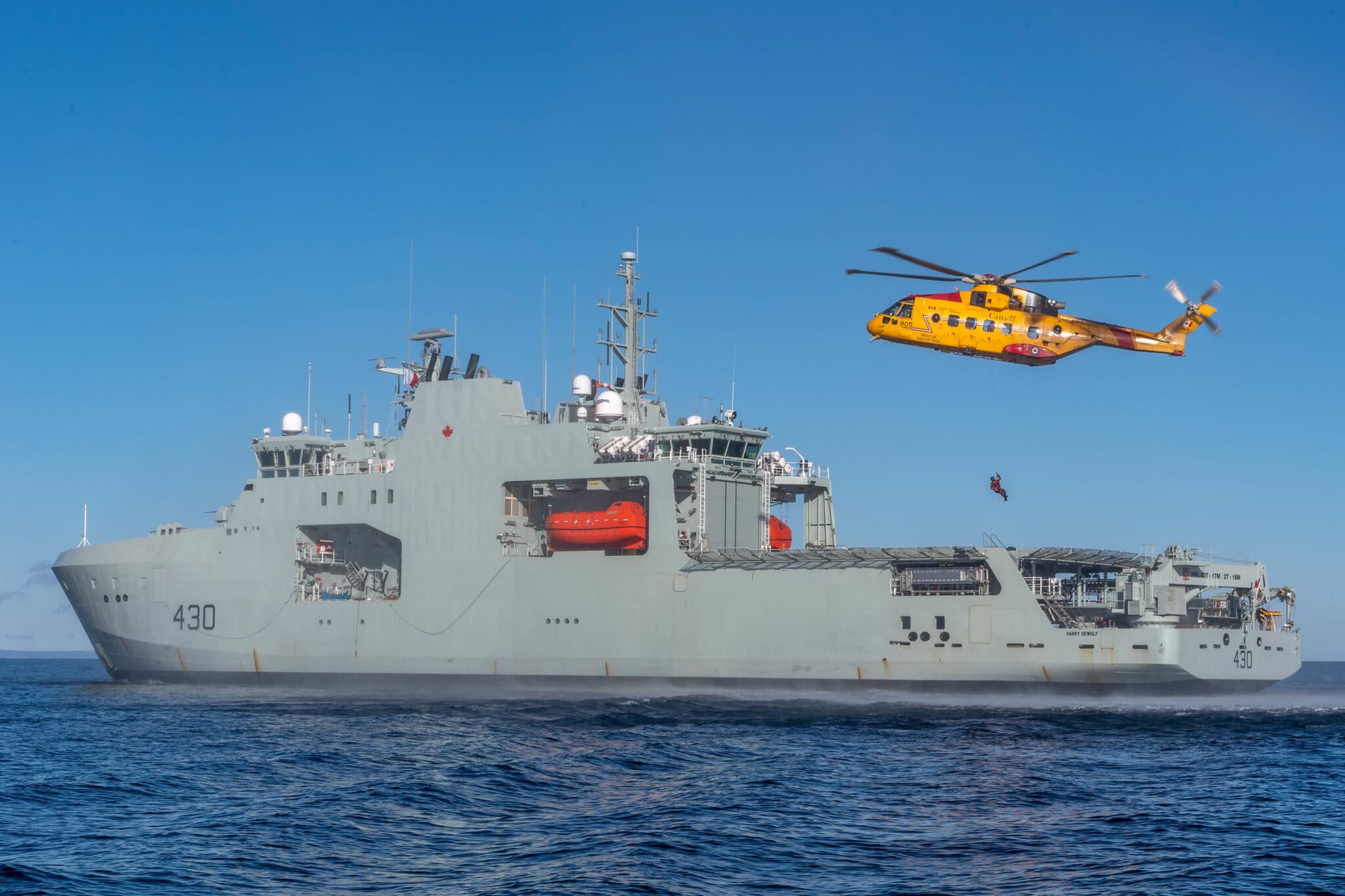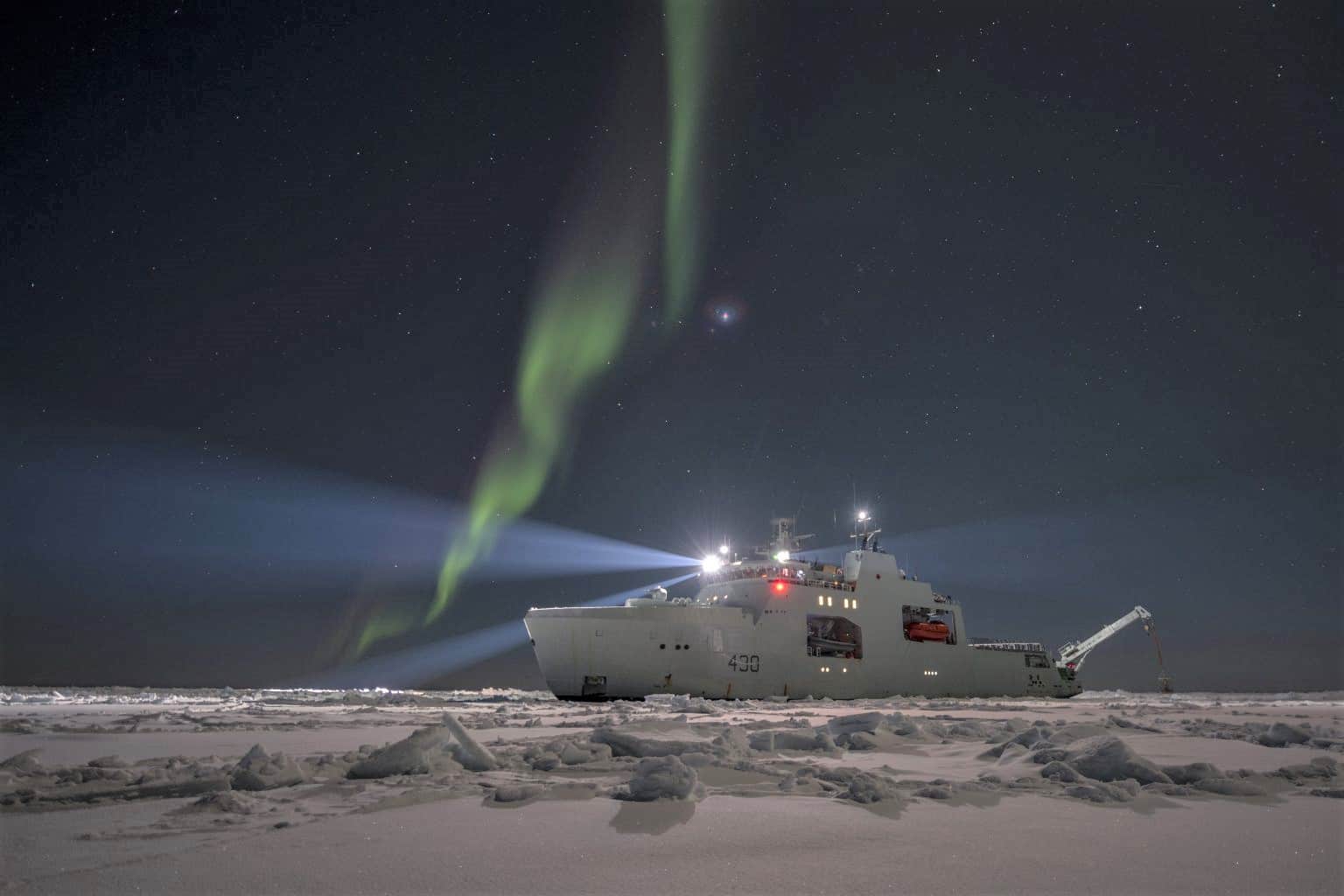First of 8 planned DeWolf class icebreakers (6 for RCN and 2 for CCG) has conducted sea trials:

 navyrecognition.com
navyrecognition.com
According to pictures released by the Royal Canadian Navy, HMCS HARRY DEWOLF Arctic and Offshore Patrol Vessel (AOPS) of the Canadian Navy has conducted sea trials off the coast of Halifax, Nova Scotia on October 15, 2020.

A CH-148 Cyclone flies behind HMCS HARRY DEWOLF and a Multi Role Rescue Boat during Royal Canadian Navy Sea Trials off the coast of Halifax, Nova Scotia on October 15, 2020. (Picture source Canadian Navy)
The HMCS Harry DeWolf (AOPV 430) is the lead ship of its class of offshore patrol vessels manufactured for the Royal Canadian Navy (RCN). The class was derived from the Arctic Offshore Patrol Ship project as part of the National Shipbuilding Procurement Strategy and is primarily designed for the patrol and support of Canada's Arctic regions.
The first Arctic and Offshore Patrol Ship (AOPS), Harry DeWolf, was ordered in 2011 and delivered to the Government of Canada on July 31, 2020, in Halifax. The AOPS will primarily conduct presence and surveillance missions along with Canada’s maritime approaches, to know who is operating in our waters and be prepared to react to a wide variety of incidents. They will also support other government departments and agencies, such as the Canadian Coast Guard, that is focused on ensuring safe navigation of shipping in the Arctic waters.
In addition to operating in up to 120 cm of first-year sea ice, the AOPS will be able to accommodate a Sikorsky CH-148 Cyclone helicopter as well as small vehicles, deployable boats, and cargo containers. She has an onboard hangar and flight deck for a naval helicopter. This will enable the RCN to have unescorted access to areas of the Arctic that were previously inaccessible.
The HMCS HARRY DEWOLF has an overall length of 103.6 m (339 ft 11 in) with a beam of 19.0 m (62 ft 4 in). The ship has a displacement of 6,615 metric tons (6,511 long tons; 7,292 short tons). She has an enclosed foredeck that protects machinery and workspaces from Arctic climates. She also has two 8.5-meter (27 ft 11 in) multi-role rescue boats capable of over 35 knots (65 km/h; 40 mph). She has a crew of 65 sailors and accommodation for 85 people.
The HMCS HARRY DEWOLF is powered by a diesel-electric system composed of four 3.6-megawatt (4,800 hp) generators and two diesel engines rated at 4.5 megawatts (6,000 hp) driving two shafts. Harry DeWolf is capable of 17 knots (31 km/h; 20 mph) in open water and 3 knots (5.6 km/h; 3.5 mph) while icebreaking in the new year ice of 1-meter (3 ft 3 in) thickness.
The HMCS HARRY DEWOLF is armed with one BAE Mk 38 25 mm (0.98 in) gun and two M2 Browning machine guns.

Canadian Navy conducts sea trials with artic and offshore patrol vesse
According to pictures released by the Royal Canadian Navy, HMCS HARRY DEWOLF Arctic and Offshore Patrol Vessel (AOPS) of the Canadian Navy has conducted se
According to pictures released by the Royal Canadian Navy, HMCS HARRY DEWOLF Arctic and Offshore Patrol Vessel (AOPS) of the Canadian Navy has conducted sea trials off the coast of Halifax, Nova Scotia on October 15, 2020.

A CH-148 Cyclone flies behind HMCS HARRY DEWOLF and a Multi Role Rescue Boat during Royal Canadian Navy Sea Trials off the coast of Halifax, Nova Scotia on October 15, 2020. (Picture source Canadian Navy)
The HMCS Harry DeWolf (AOPV 430) is the lead ship of its class of offshore patrol vessels manufactured for the Royal Canadian Navy (RCN). The class was derived from the Arctic Offshore Patrol Ship project as part of the National Shipbuilding Procurement Strategy and is primarily designed for the patrol and support of Canada's Arctic regions.
The first Arctic and Offshore Patrol Ship (AOPS), Harry DeWolf, was ordered in 2011 and delivered to the Government of Canada on July 31, 2020, in Halifax. The AOPS will primarily conduct presence and surveillance missions along with Canada’s maritime approaches, to know who is operating in our waters and be prepared to react to a wide variety of incidents. They will also support other government departments and agencies, such as the Canadian Coast Guard, that is focused on ensuring safe navigation of shipping in the Arctic waters.
In addition to operating in up to 120 cm of first-year sea ice, the AOPS will be able to accommodate a Sikorsky CH-148 Cyclone helicopter as well as small vehicles, deployable boats, and cargo containers. She has an onboard hangar and flight deck for a naval helicopter. This will enable the RCN to have unescorted access to areas of the Arctic that were previously inaccessible.
The HMCS HARRY DEWOLF has an overall length of 103.6 m (339 ft 11 in) with a beam of 19.0 m (62 ft 4 in). The ship has a displacement of 6,615 metric tons (6,511 long tons; 7,292 short tons). She has an enclosed foredeck that protects machinery and workspaces from Arctic climates. She also has two 8.5-meter (27 ft 11 in) multi-role rescue boats capable of over 35 knots (65 km/h; 40 mph). She has a crew of 65 sailors and accommodation for 85 people.
The HMCS HARRY DEWOLF is powered by a diesel-electric system composed of four 3.6-megawatt (4,800 hp) generators and two diesel engines rated at 4.5 megawatts (6,000 hp) driving two shafts. Harry DeWolf is capable of 17 knots (31 km/h; 20 mph) in open water and 3 knots (5.6 km/h; 3.5 mph) while icebreaking in the new year ice of 1-meter (3 ft 3 in) thickness.
The HMCS HARRY DEWOLF is armed with one BAE Mk 38 25 mm (0.98 in) gun and two M2 Browning machine guns.










